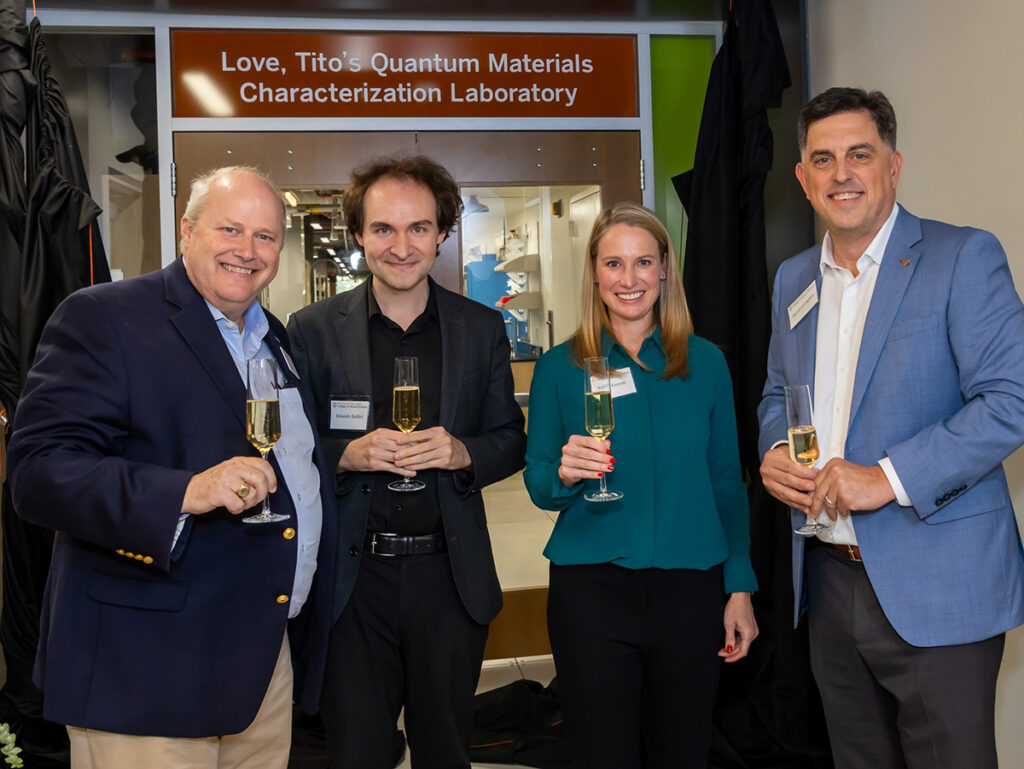Supplies scientists dream of futuristic gadgets like quantum computer systems infinitely extra highly effective than typical computer systems and photo voltaic cells able to squeezing almost all of the vitality out of daylight. Every now and then, researchers have even discovered supplies with unusual superpowers that may sometime assist understand these desires. However they typically don’t know why two supplies, with solely the subtlest of variations on the atomic stage, behave so in a different way. With out that elementary data, it’s onerous to rationally design supplies to convey concerning the subsequent wave of technological innovation.
In line with College of Texas at Austin physicist Edoardo Baldini, the important thing to unlocking this thriller is to visualise how electron vitality flows by means of a nanomaterial on ultrasmall and ultrafast scales. He’s constructing a sort of film digital camera that may seize properties of electrical prices as they transfer — comparable to vitality and momentum — with extraordinarily excessive time decision, on the order of 100 thousand billionths of a second per body.
“It’s an enormous, open query how electrons and different cost carriers transfer by means of supplies, as a result of there’s not a direct technique to visualise them at very quick time scales,” mentioned Baldini, an assistant professor of physics.
The brand new instrument — which entails a complicated pattern preparation chamber, pulsed lasers and momentum microscope — is known as the Austin Common Device for Ultrafast Momentum Nanoscopy (AUTUMN). A momentum microscope is an equipment that may map the situation, momentum and vitality of electrons which can be ejected from a nanomaterial when it’s hit by ultraviolet laser gentle.
“I don’t know of some other instrument on the earth that’s planning such a complicated pattern preparation space for the microscope itself,” Baldini mentioned. “So, we’re investing plenty of vitality and cash in enhancing the capabilities of making ready samples.”
A $1.4 million reward from Love, Tito’s, the philanthropic coronary heart of Tito’s Handmade Vodka, helps two key components — the pattern preparation chamber and high-power pulsed lasers — and it enhances contributions made out there lately to assist Baldini’s arrival on the school and a brand new Texas Quantum Institute at UT. Renovations in a bigger, extra vibrationally remoted lab house within the basement of Welch Corridor will enable the instrument to operate optimally.
“With out the contribution from Love, Tito’s, this instrument would solely take snapshots,” Baldini mentioned. “However due to this assist, we will see a film with very, very excessive time decision, on the order of picoseconds.”
The workforce at UT expects to start making these excessive time decision films in a couple of yr and a half.
Baldini lately revealed a paper within the journal Nature that relied on a high-powered pulsed laser working within the close to infrared vary, simply as within the AUTUMN instrument presently underneath development. In that analysis, he and his workforce recognized a cloth with particular properties that may make it very best for terribly quick, compact knowledge storage.
“At Love, Tito’s, we consider investing in analysis and schooling is crucial to fostering innovation and discovery,” mentioned Sarah Everett, director of worldwide influence and analysis at Tito’s Handmade Vodka. “The Austin Common Device for Ultrafast Momentum Nanoscopy (AUTUMN) represents a major milestone in our larger understanding of nanomaterials. By supporting analysis at The College of Texas at Austin, we’re not solely making strides of progress within the discipline of nanoscience, but in addition empowering the subsequent era of scientists.”
Love, Tito’s has beforehand supported different advances at UT linked to groundbreaking analysis, together with upgrades to cryo-EM microscopes within the Sauer Structural Biology Lab that may assist reveal how viruses connect to and enter cells. That reward made potential the launch of Texas Biologics. The group has supported an array of UT analysis tasks in recent times, together with infectious illness modeling efforts, novel diagnostics utilizing CRISPR Cas9, microbiome research and plastic waste remediation.































































